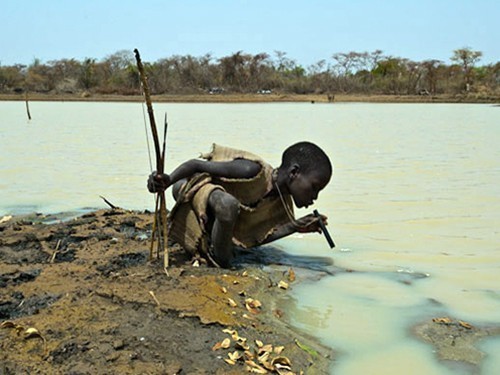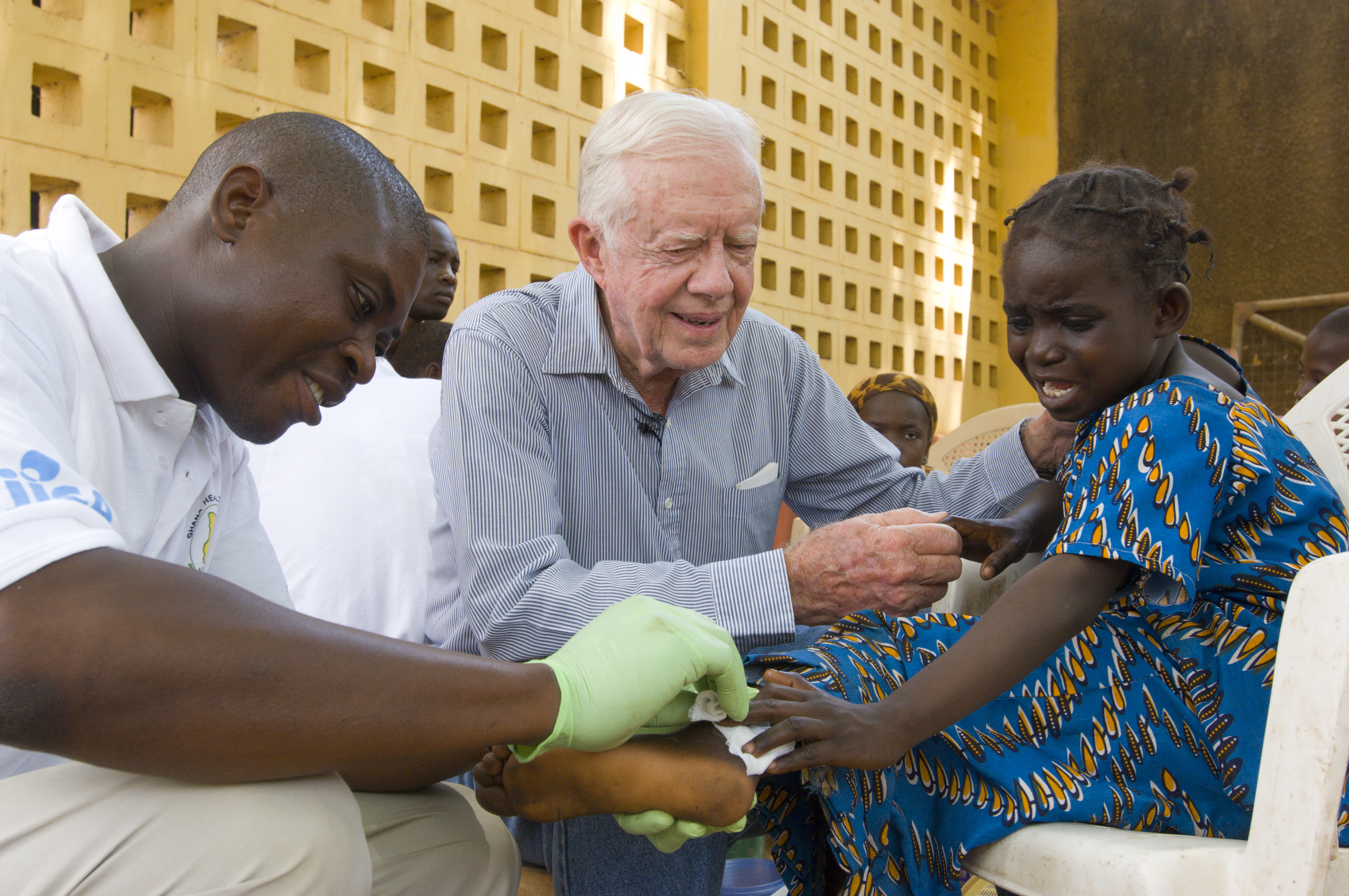When former President Jimmy Carter won the Nobel Peace Prize in 2002, the Norwegian Nobel Committee hailed his nonprofit humanitarian organization, The Carter Center, for its “hard work on many fronts to fight tropical diseases and to bring about growth and progress in developing countries.”
The three words health professionals use to describe the preventable diseases in The Carter Center’s crosshairs—neglected tropical diseases—tell you the basics about how the center views its mission: Do what others have not done. Go to the poorest places. Alleviate human suffering.
I’ve been a Carter Center trustee for many years, and have walked many villages with Jimmy in Africa. He is very well liked. Millions of people appreciate how they, their families, and their neighbors have become healthier and more productive because of the humanitarian work led by Jimmy and Rosalynn Carter.
One of The Carter Center’s most amazing achievements has been its fight to eradicate Guinea worm disease. The story is another triumph among many dramatic victories in global health that we should celebrate. They are making life better for millions of people each year.
Perhaps eighty million cases of Guinea worm have been avoided in Asia and Africa thanks to the center’s collaboration with health ministries, other NGOs such as the Gates Foundation, UNICEF and the World Health Organization, and the U.S. Centers for Disease Control and Prevention. Smallpox, which killed 300 million people in the 20th century – one of every three people infected, so far is the only human disease to be eradicated. The last small pox fatality was in 1978.
“Before The Carter Center began its work, diseases like Guinea worm and river blindness were seen as intractable—a fact of life in the world’s poorest countries,” Dr. Nils Daulaire, leader of the Global Health Council, said when the center was honored with the prestigious Gates Award in 2006.
Guinea worm is rarely fatal, “but its effects on communities are devastating,” says the center’s special advisor in combating the disease, Dr. Donald Hopkins. “In the past, we saw entire villages unable to work or go to school because of a Guinea worm outbreak. That is why we must get rid of this disease.”
Guinea worm incubates for a year in humans who drank stagnant water contaminated with larvae of the worm. Once inside the abdomen, worm larvae mate. Female worms mature and grow, often to three feet in length before emerging somewhere on the person’s skin. It may be several months before the worm can be completely removed. This typically is done by wrapping the long, thin worm around a stick or piece of gauze as the worm slowly exits. The process inflicts weeks of excruciating pain on the infected child or adult. Bacterial infections can compound the suffering and disability.
In the top photo, from 2007, President Carter comforts a young girl in Ghana as a health worker extracts a worm from her foot.
Nearly all progress in wiping out Guinea worm disease has been achieved through health education programs led by The Carter Center and its partners. The programs include encouraging local leaders to sustain focus on prevention and chronicling outbreaks.
Teaching people to filter all drinking water and stay out of contaminated areas when larvae are most likely present have been key factors. No vaccines or medicines exist that can treat Guinea worm disease. There is no known medicine or vaccine to prevent it.

A simple, yet ingenious innovation known as a pipe filter has made a huge impact because it is so easy to carry and use. (In photo above, a child in Sudan takes a drink safely through a pipe filter from lake water quite likely polluted with Guinea worm larvae.) Lightweight and worn around the neck, the filter eliminates the threat of imbibing larvae. More than 13 million have been donated through the center.
The Carter Center estimated there were 3.5 million cases of Guinea worm disease worldwide in 1986 when its work began. The figure dropped to just over ten thousand in 2005 and then to twenty-five at the end of 2016.
In 1991, Guinea worm disease was endemic in 23,735 villages in twenty-one countries in Africa and Asia. The twenty-five known cases of the disease at the end of last year were reported in nineteen villages, all in Africa—sixteen in Chad (up from nine in 2015), six in South Sudan (up from five), and three in Ethiopia (no change). Guinea worm has been wiped out everywhere else. Mali appeared to have conquered the disease last year, with no cases reported after five in 2015.
“The Carter Center has turned conventional wisdom on its head,” Dr. Daulaire added back in 2006, twenty years after the center’s Guinea worm campaign began, “and reminded the world that seemingly impossible obstacles can be overcome with the right combination of innovation, dedication, and community involvement.” Those words ring ever more powerfully today.
** **
To learn more about the fight to defeat Guinea worm disease, please see: https://www.cartercenter.org/news/pr/guinea-worm-worldwide-cases-jan2017.html
Photo credits: Louise Gubb, courtesy of The Carter Center.


Leave a Reply